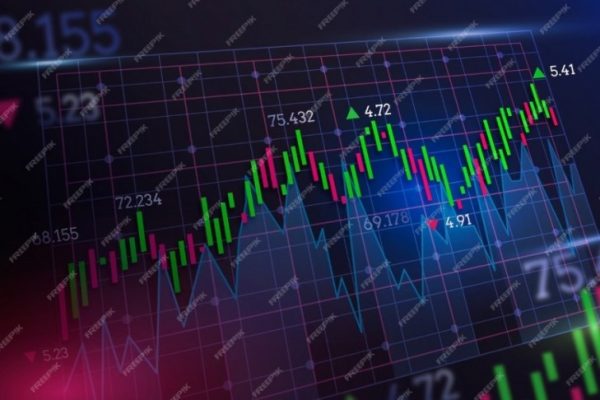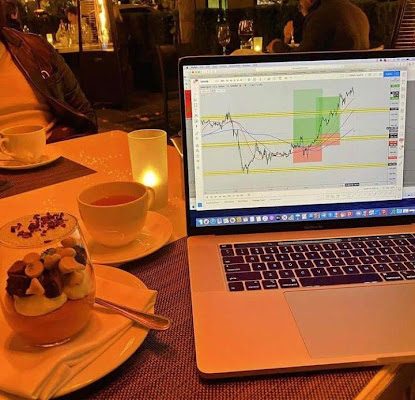The global currency market is surely the world’s biggest and fastest-moving trading market. Perhaps, you might be more familiar with the name forex market, as foreign exchange is the foundation upon which this liquid market is built. The participants of the forex market range from small retail traders who are individuals engaging in trading activities to large banks and liquidity providers. Retail traders try to earn some profits by anticipating the price changes that take place in forex currencies that are bought and sold in pairs.
Now, what is actually the relevance of points in forex trading? And how to calculate the value of one point for your trades? This article is written to provide comprehensive answers to these two questions so that you can prepare well for live trading as a beginner
The Role of a Point in Forex and How They Differ From Pips
Those who are fairly new to the forex world must do some reading to understand the role of a point in forex, and one major mistake that many newbies make is confusing points with pips. Pip is the abbreviation for Price Interest Point or Percentage in Point. But they are not the same. Each and every beginner needs to be clear about the difference between these two technical terms. Pip is a unit of measurement that tracks and expresses the price differences of currency pairs at a basic level. But a point is the minimum amount of price change which makes it smaller than pips.
Pip is the official and standard unit of measurement, and it is made of points. One pip is formed of ten points; hence, one point is 1/10th of a pip. Pip movements are measured in the 4th decimal place of currency pairs, while point differences are tracked by looking at the 5th decimal place. But there is a difference for Currency pairs with Japanese Yen as their pip size is stated in accordance with the 2nd decimal place, and the 3rd decimal place is relevant for points. Basically, the last decimal place would be taken by points in forex currency pairs. But there is also another technical term, ‘tick’, which is typically the most minor movement in prices.
To make it further clear, let’s have a look at this example: Imagine a currency pair’s price goes from 1.00010 to 1.00020; here, the difference is one pip or 10 points. Then the price again goes up, hitting 1.00025. Here the difference in price is 5 points. The calculation of points becomes essential when there are such small price changes which are impossible to measure in pips unless you use a pip calculator, which makes the calculation easier. If you are still unclear about the concept of pips, try to gain practical knowledge by practising in a demo account.
These days forex brokers and trading platforms provide free access to a lot of trading tools which come in handy to understand and learn about various technical terms used for forex trading. It is essential to have some basic idea about all these fundamental concepts before you get into trading for real. Having such online tools in your trader’s toolkit is a must for simplifying the calculation process, which is part and parcel of trading.
Understanding Lot, Base Currency and Quote Currency
Lot is actually a very crucial forex term as it plays a key role in our trades and their monetary value. When we place an order to buy or sell a currency pair, we need to specify the lot size. There are three types of lots in forex, out of which standard lot is the most commonly used one, and the default option is seen when we place an order to trade. The standard lot stands for 1,00,000 units of currency. There is also a mini lot where you will be trading with 10,000 units of currency and then the micro lot, which is formed of just 1000 units of currency. Hence, your position size for a trade is stated as the number of lots you wish to trade with as well as the type of lot preferred. Just as you calculate the pip value, you can calculate the lot size using trading tools and manage your trade risks easily.
Now to understand base currency and quote currency, we need to have a look at the forex trading instruments called currency pairs. A currency pair is the exchange rate of currencies as it quotes the value of a currency compared to the other currency, which is stated second in a pair. Let’s look at GBP/USD as an example. Here GBP is the base currency, and its value is compared and quoted against the US Dollar, which is the quoted currency in this pair. So, the price of this pair going up would mean that the GBP is gaining more value against USD, and similarly, if the price goes down, GBP is losing its value compared to USD. This is actually the basis for all transactions or trades in the forex world.
Point Value Calculation for Different Types of Pairs
The procedure followed for point value calculation is different for different types of forex pairs. As you may already know, USD being the reserve currency of the world, plays a key role in the forex market as well as USD being a part of the most traded currency pairs in the market. The major pairs, including USD, are surely the most liquid and popular trading instruments. So, here we are dividing the currency pairs into three categories based on the role played by USD in these pairs.
- Pairs Where USD is Quoted Currency
Calculating point value is pretty simple when the value of another currency is being quoted against USD. All you have to do is multiply the point size by the position size and divide that by the Quote currency rate to USD. The Quote currency rate is 1.
Point Value = Position Volume × Point / 1
- Pairs Where USD is the Base Currency
The point value calculation becomes a little tricky when the US Dollar becomes the base currency for the pair. Because we need to add one more thing to the calculation: the current rate of the currency being quoted compared to the US Dollar, this keeps changing, and we can’t always use one like how we do for pairs with USD as the quote currency.
Point Value = Position Volume × Point / Quote Currency Rate to USD
- Cross Pairs
The last one is cross pairs which don’t include USD at all. The base and quote currencies will be other major and minor currencies. Here the point value calculation becomes a bit more complex.
Point Value = (Position Volume × Point) x Base Currency to USD Rate / Current Pair Rate
The Relevance of Points in Profit Calculation
As you can see, calculating the point value for every trade you want to enter can become a tedious task, leading to a lot of confusion for an average beginner. But the point value calculation is just as important as pip value calculations in forex as many times the currency pairs tend to move very little, but even such small movements are relevant for calculating your potential profits or losses for a trade.
We must take some time to calculate the possible outcome of a trade: profit or loss. The result depends on whether we win or lose the trade as markets move against our expectations. We should be prepared to face both situations as that is an integral part of risk management which is just as relevant as maximising our profit potential.
But calculating the potential profits and losses of every trade is not that easy when you try to do it manually as a newbie trader. You may end up spending a lot of time on this, and the chances of errors are greater in manual calculations. Hence, brokers and trading platforms have added automated profit calculators, which can be easily used online, and they always provide instant and accurate results saving our time and eliminating the risk of mistakes.
So, you can have a look at platforms that provide such tools and start using them for trading.
Final Words
Now we have come to the end of this article as we have learned everything about the importance of points in forex trading and the methods to calculate point value for your trades. As we stated earlier, a point is 1/10th of a pip and Pip value calculation is an integral part of the trading process as our profits and losses entirely depend on the extent to which the price moves during a trade. However, points are the most precise unit for tracking price movements in currency pairs, as they are smaller than pips. So, understanding the difference between pips and points is essential for forex trading.




